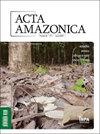Exposure of dogs and wild carnivores to canine distemper virus, canine parvovirus, Leishmania infantum, and Toxoplasma gondii in the Xingu River basin, Brazilian Amazon: Prevalence, spatial distribution, and association with land cover types
IF 0.8
4区 环境科学与生态学
Q4 ECOLOGY
引用次数: 0
Abstract
ABSTRACT Infectious diseases transmitted by domestic dogs can have important consequences for wildlife health. This study aimed to investigate the exposure to four selected pathogens in dogs and wild carnivores in six municipalities in the Xingu River Basin (Pará state, Brazil). The prevalence of positive animals, their spatial distribution, and the association with land cover types were analyzed. Blood samples from 298 dogs and 11 free-ranging wild carnivores were tested through serological diagnoses. The seroprevalence to canine distemper virus, canine parvovirus, Leishmania infantum, and Toxoplasma gondii was 68.6, 75.4, 14.8, and 47.1%, respectively. The seroprevalence to canine distemper virus and T. gondii was significantly higher in dogs than in wild carnivores. Spatial analyses revealed a broad distribution of seropositive animals, except for animals seropositive to L. infantum, which were concentrated in the southern region close to the margins of the Xingu River. Spatial clusters of seropositive animals were detected for all tested pathogens, indicating areas with a greater risk of exposure. Positive results for canine distemper virus, T. gondii, and L. infantum were associated with different types of land cover, and thus were considered risk factors for pathogen exposure. The high seroprevalence of dogs to canine distemper virus and to canine parvovirus are concerning, suggesting risks of transmission to wild species inhabiting areas close to the surveyed communities.巴西亚马逊新古河流域犬类和野生食肉动物对犬瘟热病毒、犬细小病毒、婴儿利什曼原虫和刚地弓形虫的暴露:患病率、空间分布及其与土地覆盖类型的关系
由家养狗传播的传染病会对野生动物的健康产生重要影响。本研究旨在调查巴西帕尔州新古河流域6个城市中犬类和野生食肉动物暴露于4种选定病原体的情况。分析了阳性动物的流行、空间分布及其与土地覆被类型的关系。通过血清学诊断对298只狗和11只自由放养的野生食肉动物的血液样本进行了检测。犬瘟热病毒、犬细小病毒、婴幼儿利什曼原虫和刚地弓形虫血清阳性率分别为68.6、75.4、14.8%和47.1%。犬犬瘟热病毒和弓形虫血清阳性率明显高于野生食肉动物。空间分析结果显示,除乳杆菌阳性外,血清阳性动物分布广泛,主要集中在靠近新谷河边缘的南部地区。所有检测的病原体均检测到血清阳性动物的空间聚集性,表明存在较大暴露风险的地区。犬瘟热病毒、弓形虫和婴儿乳杆菌的阳性结果与不同类型的土地覆盖有关,因此被认为是病原体暴露的危险因素。犬对犬瘟热病毒和犬细小病毒的高血清阳性率令人担忧,表明存在向居住在调查社区附近地区的野生物种传播的风险。
本文章由计算机程序翻译,如有差异,请以英文原文为准。
求助全文
约1分钟内获得全文
求助全文
来源期刊

Acta Amazonica
PLANT SCIENCESECOLOGYZOO-ECOLOGY
CiteScore
1.70
自引率
0.00%
发文量
34
审稿时长
22 weeks
期刊介绍:
Acta Amzonica is a multidisciplinary, peer-reviewed, open access, free-of-charge scientific journal for research in and about the Amazon region, published since 1971 by the Instituto Nacional de Pesquisas da Amazônia - INPA, in Brazil.
The journal publishes quarterly issues containing articles and short communications in English across a broad range of disciplines, including Agronomy and Forestry, Animal Sciences and Fisheries, Biodiversity and Conservation, Biotechnology, Chemistry and Pharmacology, Environmental Sciences, Food Sciences, Geosciences, Health Sciences, Human and Social Sciences, and Materials Technology.
 求助内容:
求助内容: 应助结果提醒方式:
应助结果提醒方式:


